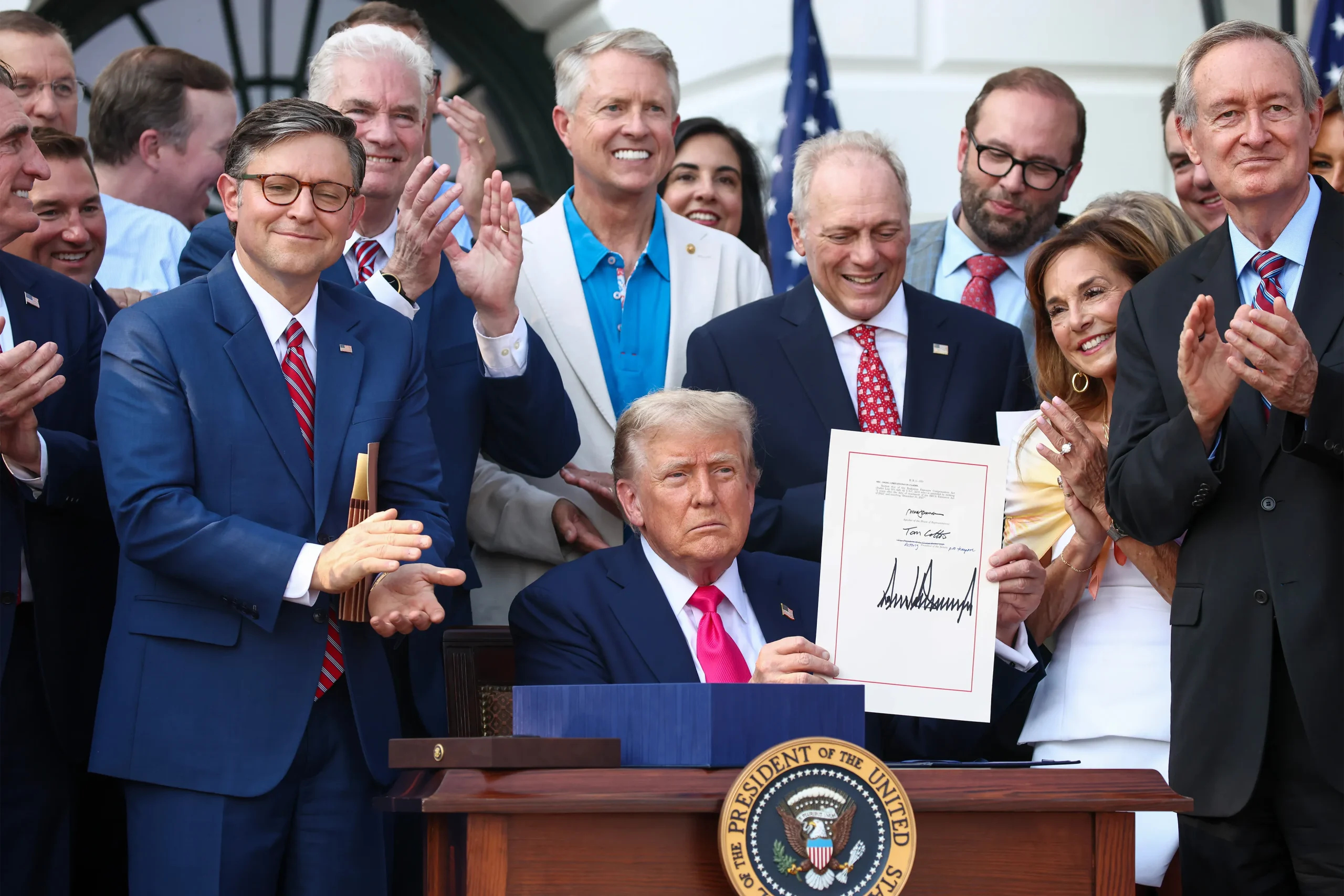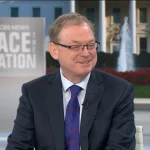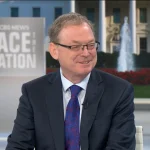When President Donald Trump announced sweeping cuts to federal health funding, many state leaders braced for the financial aftershocks that were bound to follow. For years, states have relied heavily on federal support to keep their healthcare systems afloat, particularly Medicaid, public health programs, and preventive care initiatives. The sudden reduction in federal dollars has left state governments scrambling to balance their budgets, forcing difficult choices between healthcare, education, infrastructure, and other critical services.
- The Scope of Trump’s Health Funding Cuts
- The Human Cost of Reduced Health Funding
- States Forced Into Tough Budgetary Trade-Offs
- Partisan Divides Over Responsibility
- Impact on Medicaid Expansion States vs. Non-Expansion States
- Healthcare Workforce Challenges
- Public Health Preparedness at Risk
- Economic Ripple Effects of Health Funding Cuts
- Innovative State Responses to Funding Gaps
- Expert Opinions on Long-Term Consequences
- The Political Stakes Ahead
- FAQs
- Why did Trump cut federal health funding?
- Which states have been most affected by the funding cuts?
- How have hospitals responded to the cuts?
- What are the economic impacts of these cuts?
- Can states fully replace the lost federal funding?
- Conclusion
From governors’ offices to rural hospitals and urban community clinics, the ripple effects of these cuts are being felt across the nation, reshaping debates on fiscal responsibility, healthcare access, and the role of federal government in supporting vulnerable populations. The situation has evolved into one of the most contentious policy battles in the country, with state lawmakers from both parties grappling with the moral, political, and economic costs of losing billions in health-related funding. The story of these cuts is not just about dollars and cents—it’s about the lives of millions of Americans who depend on affordable healthcare and the states struggling to meet their needs under mounting financial pressure.
The Scope of Trump’s Health Funding Cuts
The cuts introduced by the Trump administration targeted multiple layers of the healthcare system, particularly Medicaid and public health block grants. According to federal budget reports, states collectively lost tens of billions in funding that previously supported low-income families, seniors in nursing homes, children’s health insurance, and public health infrastructure.
Medicaid alone, which accounts for more than 20% of state budgets nationwide, bore the brunt of the reductions. Experts warn that these cuts have created what many describe as a “perfect storm” of fiscal challenges. States were already contending with rising healthcare costs, driven by an aging population and increasing demand for mental health services. By slashing federal contributions, the Trump administration effectively shifted the financial burden onto state governments, many of which are constitutionally required to maintain balanced budgets.
The Human Cost of Reduced Health Funding
While politicians debate the numbers, ordinary Americans are living the consequences. In rural areas, small hospitals that depend on Medicaid reimbursements are reporting major financial losses, pushing many to the brink of closure. In cities, community health clinics have had to scale back outreach programs, cutting vital services for the uninsured and underinsured.
Take the story of Linda Martinez, a single mother in Texas whose son relies on Medicaid for asthma treatments. After the cuts, Linda’s local clinic reduced staff and increased wait times, forcing her to drive over an hour to the nearest facility. “It feels like we’ve been abandoned,” she said in a recent interview. Stories like Linda’s illustrate the real-world toll these funding decisions are having on families across the country.
States Forced Into Tough Budgetary Trade-Offs
With federal support dwindling, state governments are being forced to make hard choices. Many governors face a stark reality: either raise taxes, cut services, or both. Education, infrastructure, and public safety are now competing for dollars that once flowed to healthcare. California, for instance, has attempted to cushion the blow by dipping into rainy-day reserves, but budget analysts warn that this strategy is not sustainable in the long term.
Meanwhile, states like Mississippi and Alabama, which have smaller tax bases and fewer fiscal buffers, are considering cuts to public services that could further weaken already strained social safety nets. According to the National Association of State Budget Officers, at least 23 states reported mid-year budget shortfalls in the first year after Trump’s cuts went into effect, with healthcare costs cited as a primary driver.
Partisan Divides Over Responsibility
The cuts have sparked intense political debate at the state level. Republican governors in some states argue that the reductions will encourage fiscal discipline and push states to innovate with healthcare delivery. Democrats, on the other hand, argue that these cuts represent a betrayal of federal commitments and will lead to worse health outcomes and higher long-term costs.
New York Governor Kathy Hochul described the cuts as “reckless,” warning that they would undermine years of progress in expanding healthcare access. By contrast, Republican leaders in states like Florida insist that the changes empower states to take control of their healthcare systems without federal interference. This partisan divide reflects a deeper ideological battle over the role of government in providing healthcare—a debate that has long defined American politics.
Impact on Medicaid Expansion States vs. Non-Expansion States
The cuts have also exposed a sharp divide between states that expanded Medicaid under the Affordable Care Act and those that did not. Expansion states like California, New York, and Michigan are struggling to sustain the higher enrollment levels that came with expansion, while non-expansion states such as Texas and Florida argue that they are better positioned to absorb the cuts because they never fully depended on the additional funding.
Yet, research suggests that non-expansion states are not immune to the fallout. Rural hospitals in these regions, already stretched thin, are among the hardest hit. The American Hospital Association reported that more than 130 rural hospitals have closed nationwide over the last decade, and the pace has accelerated since the federal cuts.
Healthcare Workforce Challenges
Beyond budget numbers, the cuts are placing additional strain on the healthcare workforce. Nurses, doctors, and support staff are reporting burnout as staffing shortages worsen due to cost-cutting measures. Many hospitals are unable to offer competitive wages, driving workers to larger health systems in more financially stable states.
A survey conducted by the Kaiser Family Foundation found that nearly 60% of healthcare administrators reported difficulties in retaining staff after funding reductions. This shortage directly impacts patient care, leading to longer wait times, reduced service availability, and, in some cases, preventable health crises.
Public Health Preparedness at Risk
Another area deeply affected by the cuts is public health preparedness. State health departments, which rely on federal funding for disease prevention, immunization programs, and emergency preparedness, are now facing budget gaps that threaten their ability to respond to outbreaks. The COVID-19 pandemic highlighted the importance of robust public health infrastructure, yet many states find themselves unable to replenish supplies, maintain laboratory capacity, or train staff due to the funding shortfall. Public health experts warn that the nation could be left vulnerable to future pandemics, antibiotic-resistant infections, and other large-scale health crises.
Economic Ripple Effects of Health Funding Cuts
The economic consequences extend beyond healthcare. When hospitals close, communities lose not just medical care but also jobs and local economic stability. Healthcare is one of the largest employers in many states, particularly in rural areas. The loss of federal funding has led to layoffs, reduced hours, and hiring freezes, further weakening local economies.
A report from the Economic Policy Institute estimated that every $1 million cut from Medicaid results in the loss of approximately 17 jobs, both directly in healthcare and indirectly in local businesses. This multiplier effect means that the Trump-era cuts could cost states hundreds of thousands of jobs nationwide.
Innovative State Responses to Funding Gaps
Despite these challenges, some states are pursuing innovative solutions to offset the losses. Colorado has implemented a public option healthcare plan designed to provide affordable coverage while reducing costs. Massachusetts is exploring new revenue streams, including healthcare-related taxes, to fill budget gaps.
States are also turning to partnerships with private organizations and nonprofits to sustain vital programs. For example, in Ohio, philanthropic organizations have stepped in to support opioid treatment programs that lost federal backing. While these solutions provide some relief, experts caution that they cannot fully replace the scale of federal investment.
Expert Opinions on Long-Term Consequences
Policy experts agree that the long-term consequences of these cuts could be profound. Dr. Leana Wen, a public health professor at George Washington University, warns that “the erosion of state healthcare budgets will not only worsen health outcomes but also increase long-term costs as preventable conditions become more severe.
” Economists also argue that shifting costs from the federal government to states may ultimately backfire. States with weaker tax bases will be forced to raise taxes or cut essential services, creating inequities in healthcare access across the country. This could widen the gap between wealthy and poorer states, deepening regional disparities in health outcomes.
The Political Stakes Ahead
As the 2026 elections approach, the issue of healthcare funding is shaping up to be a defining political battleground. Voters consistently rank healthcare among their top concerns, and candidates from both parties are using the Trump cuts to frame broader arguments about fiscal responsibility, fairness, and the role of government.
For Democrats, the cuts represent a rallying cry for restoring and expanding federal health support. For Republicans, they serve as proof of the need to reduce federal spending and give states more control. The debate is certain to intensify as state leaders continue to wrestle with the fallout.
FAQs
Why did Trump cut federal health funding?
The Trump administration argued that the cuts were necessary to reduce federal spending and encourage states to take more responsibility for healthcare funding. Supporters viewed it as a step toward greater fiscal discipline, while critics saw it as an attack on vulnerable populations.
Which states have been most affected by the funding cuts?
States with larger Medicaid programs, such as California, New York, and Michigan, have faced significant budget pressures. However, rural states with smaller tax bases, including Mississippi and Alabama, are also struggling due to limited resources and hospital closures.
How have hospitals responded to the cuts?
Hospitals, particularly in rural areas, have faced closures, layoffs, and reduced services. Many have called for state or private intervention to keep facilities open, but the loss of federal dollars has left many with few options.
What are the economic impacts of these cuts?
Beyond healthcare access, the cuts have affected jobs and local economies. Every $1 million reduction in Medicaid funding is estimated to cost about 17 jobs, leading to significant job losses in healthcare and related sectors.
Can states fully replace the lost federal funding?
Most experts believe that states cannot fully replace the scale of federal investment. While some states are experimenting with public options, taxes, or partnerships with nonprofits, the long-term sustainability of these efforts remains uncertain.
Conclusion
The battle over Trump’s health funding cuts is not simply about budgetary adjustments; it is about the future of healthcare in America. States are left grappling with impossible choices that directly impact the health and well-being of millions of people. From rural hospitals fighting to stay open to state legislatures struggling to keep budgets balanced, the ripple effects of these cuts are profound and far-reaching.
Ultimately, the debate raises fundamental questions about fairness, federal responsibility, and the social contract between government and its citizens. Whether states can find sustainable solutions or whether the federal government will be forced to re-engage in healthcare funding remains to be seen. What is clear is that the stakes are high, and the decisions made today will shape the nation’s healthcare landscape for decades to come.







